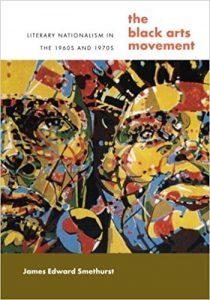The Black Arts Movement, Black Aesthetics Movement or BAM is the artistic outgrowth of the Black Power movement that was prominent in the 1960s and early 1970s. Time magazine describes the Black Arts Movement as the “single most controversial movement in the history of African-American literature – possibly in American literature as a whole.” The movement has been seen as one of the most important times in African-American literature. It inspired black people to establish their own publishing houses, magazines, journals and art institutions. It led to the creation of African-American Studies programs within universities. The movement was triggered by the assassination of Malcolm X.Among the well-known writers who were involved with the movement are Nikki Giovanni, Sonia Sanchez, Maya Angelou, Hoyt W. Fuller, and Rosa Guy. Although not strictly part of the Movement, other notable African-American writers such as novelists Toni Morrison and Ishmael Reed share some of its artistic and thematic concerns.
 Read this text and others available in Ames to learn more about the Black Arts Movement.
Read this text and others available in Ames to learn more about the Black Arts Movement.
The Black Arts Movement: Literary Nationalism in the 1960s and 1970s – Emerging from a matrix of Old Left, black nationalist, and bohemian ideologies and institutions, African American artists and intellectuals in the 1960s coalesced to form the Black Arts Movement, the cultural wing of the Black Power Movement. In this comprehensive analysis, James Smethurst examines the formation of the Black Arts Movement and demonstrates how it deeply influenced the production and reception of literature and art in the United States through its negotiations of the ideological climate of the Cold War, decolonization, and the civil rights movement. Taking a regional approach, Smethurst examines local expressions of the nascent Black Arts Movement, a movement distinctive in its geographical reach and diversity, while always keeping the frame of the larger movement in view. The Black Arts Movement, he argues, fundamentally changed American attitudes about the relationship between popular culture and “high” art and dramatically transformed the landscape of public funding for the arts.

0 Comments.